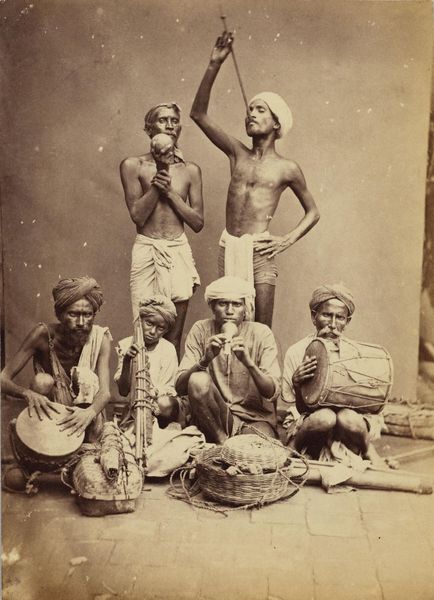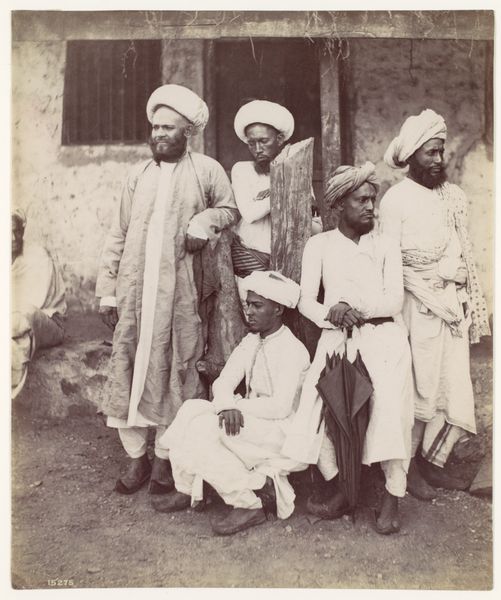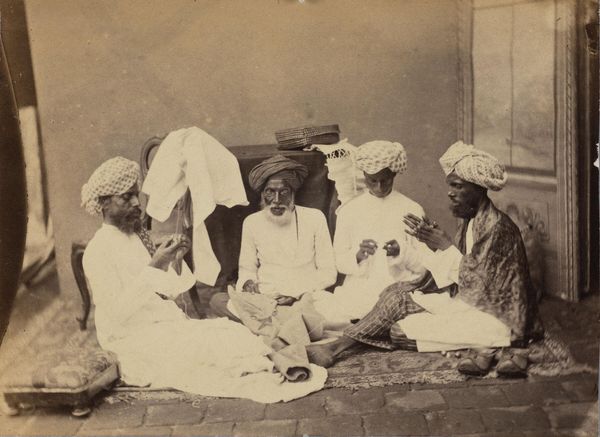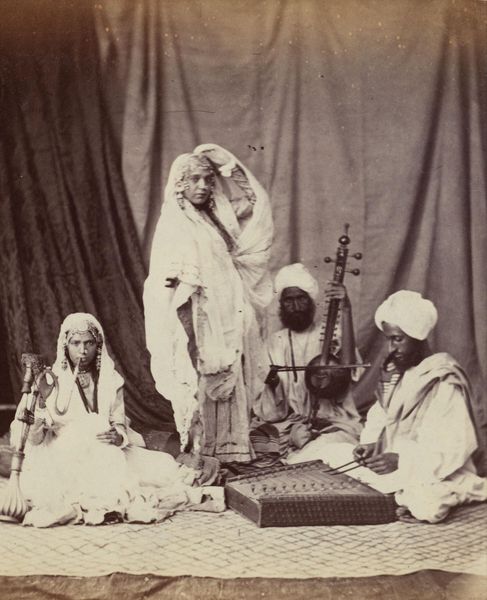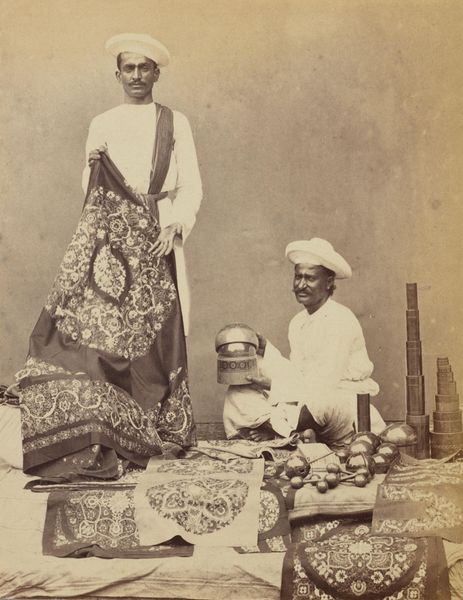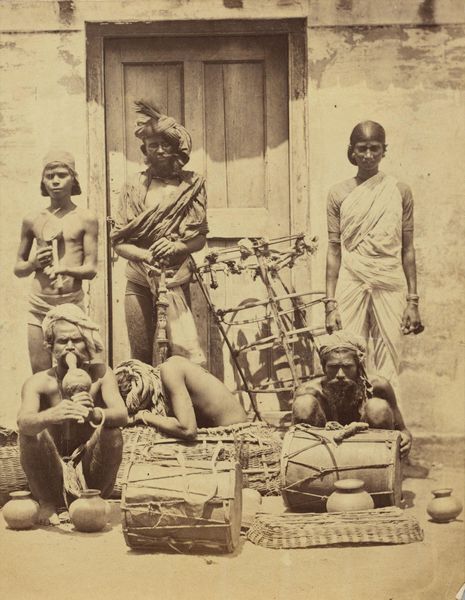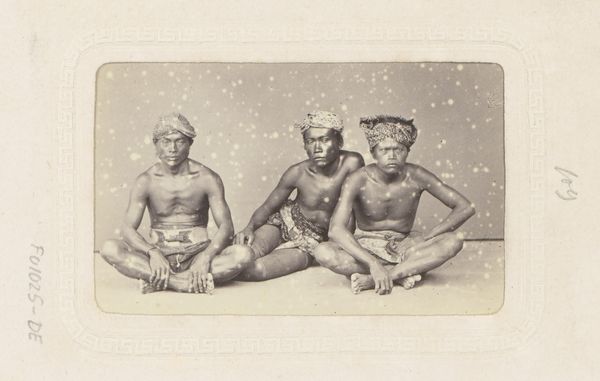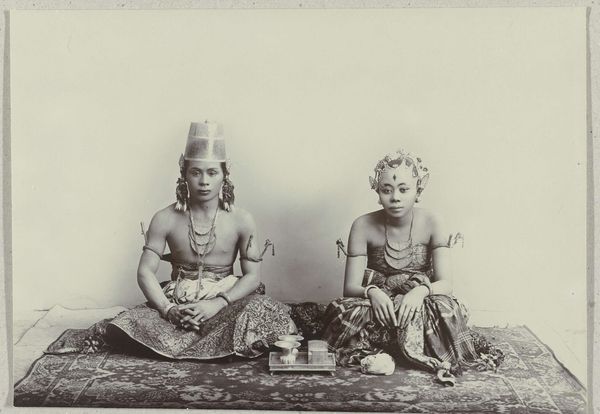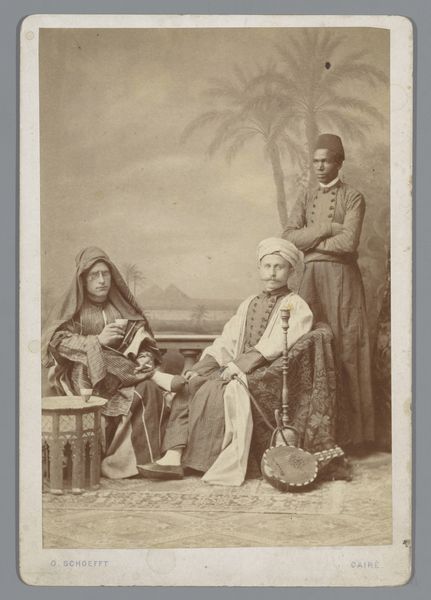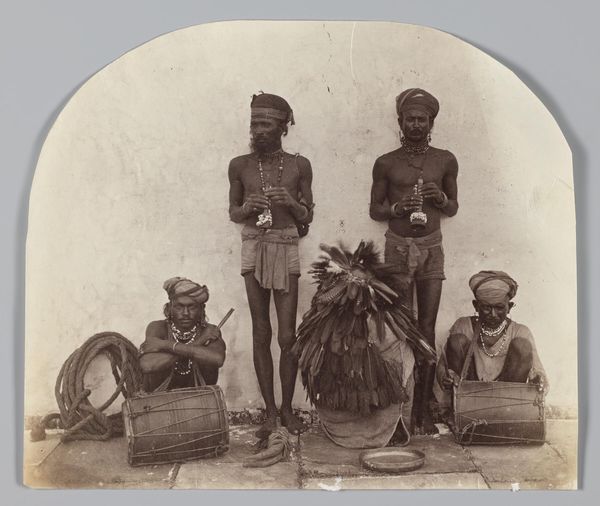
gelatin-silver-print, photography, gelatin-silver-print
#
portrait
#
gelatin-silver-print
#
asian-art
#
photography
#
historical photography
#
orientalism
#
gelatin-silver-print
#
19th century
#
realism
Dimensions: height 164 mm, width 207 mm, height 304 mm, width 376 mm
Copyright: Rijks Museum: Open Domain
This is Francis Frith's "Portret van zes Indiase mannen," a photograph now held at the Rijksmuseum. Frith was one of the first British photographers to extensively document the Middle East and India. This albumen print on paper emerges from a complex colonial context. The physical and chemical processes involved – coating, sensitizing, exposing, and developing – were extensions of industrial methods adapted to artistic purposes. The wet-collodion process, used to make the negative, was particularly laborious, requiring a portable darkroom tent. The resulting sepia tones and sharp detail create an image that feels both immediate and distant. As we consider the image's aesthetic qualities, it is crucial to remember the power dynamics at play. Photography was, in this case, a tool of empire, fixing the image of the "other" in the Western imagination. The very act of capturing these men's likenesses was an assertion of control. This photograph invites us to think critically about the role of materials and processes in shaping our understanding of history, labor, politics, and consumption.
Comments
No comments
Be the first to comment and join the conversation on the ultimate creative platform.
